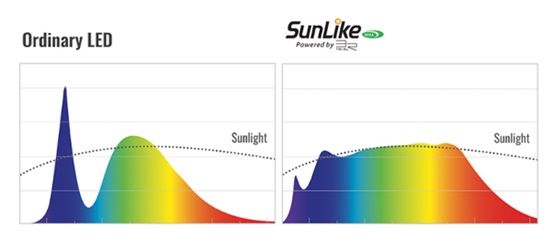Seoul Semiconductor’s SunLike Series natural spectrum LEDs were identified as a key light source for promoting human well-being, based on the results of a recent comprehensive sleep study conducted by scientists at the University of Basel.
In collaboration with Toshiba Material’s TRI-R spectrum technology, Seoul Semiconductor developed SunLike Series natural spectrum LEDs in 2017, which is the first LED light source to closely match the spectrum of natural sunlight.

(Image: Seoul Semiconductor)
There has been an increase in research activity on the relationship between light and human bio-function. Prof. Christian Cajochen and his team at the University of Basel recently published an article titled “Effect of Daylight LED on Visual Comfort, Melatonin, Mood, Waking Performance, and Sleep,” published in the Journal of Lighting and Research Technology. The study focuses on the effects of light spectrum on sleep quality, visual comfort, well-being and daytime alertness.
The study indicated that light is one of the strongest control factors for human circadian rhythms, such as the secretion of the sleep promoting hormone melatonin. According to Prof. Cajochen’s research, LED light sources with the same measured correlated color temperature (CCT) and intensity, but different spectral output, can have different effects on human behavior and physiology. The research tested subjects’ visual comfort, circadian physiology, daytime alertness, mood, cognitive performance, and sleep after being exposed to both conventional LED light, and natural spectrum LED light for 49 hours in a laboratory setting.
By providing the same spectrum as sunlight and in the visible light range, SunLike Series natural spectrum LEDs deliver benefits to human well-being, consistent with the mechanisms of vision that impact both image forming and non-image forming aspects of the eye, as well as the control of circadian rhythms. While the qualities of artificial light have been described primarily with color and intensity thus far, SunLike Series natural spectrum LEDs have introduced light spectrum as another important factor in determining overall light quality.












